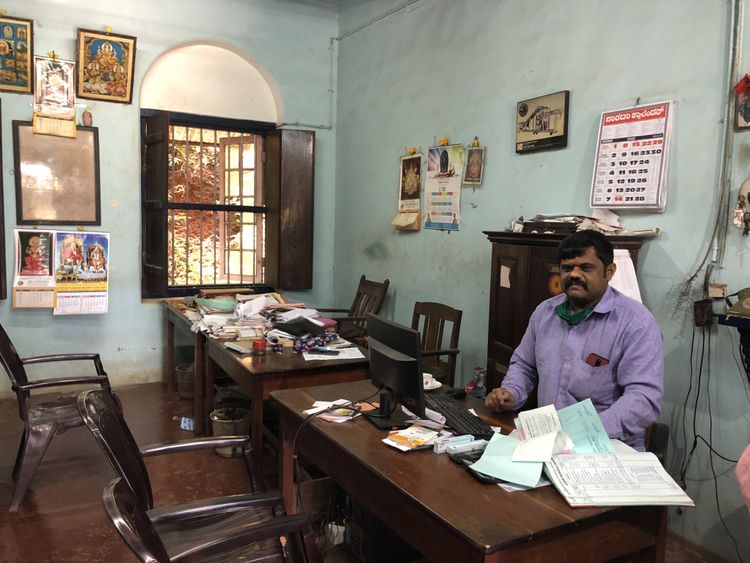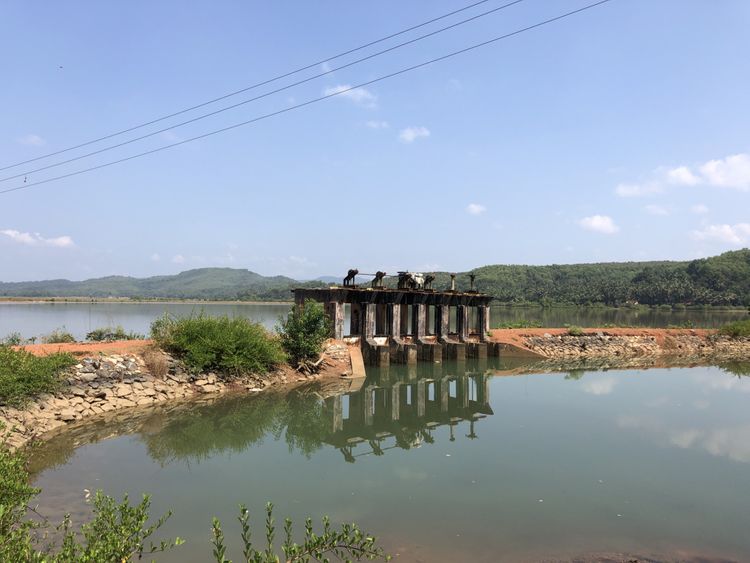Bengaluru: Their story of struggle, defiance and triumph is flavoured by the salt they have historically produced.
Maintaining a tradition that goes back 300 years, the natives of Sannikatta, a small village near Gokarna in coastal Karnataka, have seen the ebb and flow of history, just like the river they harvest for life.
The Sannikatta folks are a river people, skilled at harnessing the currents of the Aghanashini river estuary to enrich their lives and that of others.
The air in the estuary is distinctly savoury, just like the food cooked on the banks of Aghanashini — thanks to a special ingredient that is produced here — the golden brown salt.
Sannikatta Salt Fields in Gokarana, in the Uttara Kannada district of Karnataka, is the only natural estuary-based salt production enclave in South India.
Natives in Sannikatta have been producing the much sought after natural golden brown salt for more than three centuries.
In their traditional handmade process, the salt farming begins in November and continues for nearly four months. The harvest happens during the summer months, between March and May, before the monsoon arrives. With the onset of monsoon in late May or early June, the production cycle comes to an end.
Around 50 families practise their ancestral tradition of salt farming in Sannikatta.
In 1952, the families came together to form the Nagarbail Salt Owners’ Cooperative Society (NSOCS) to combine the efforts of all the salt farmers who were earlier working individually. The society now produces 10,000 tonnes of salt annually.
“Earlier, when we were all producing individually our efforts were getting divided. Post independence, the government advised us to form a cooperative to centralise manufacturing. This has helped us organise better, improving our efficiency and production capacity,” said Navin Nadkarni, manager and one of the 355 members of the society.
Though the work is labour intensive, natural elements such as sunlight and wind play an important role in the production process.
“Wind stirs the water and it is the key to maintaining high density of salinity. A combination of local saline water, seawater, sunlight and coastal wind work to form the salt,” Nadkarni added.
So, how does the process work?
In the early stage of the season, rain water that is collected in the pans has to be drained completely, then the mud and slush is cleaned, and all the bunds are repaired. Throughout the season the workers have to make sure the field surface and the bunds are in prime condition to ensure a good harvest.
The salt pans are connected to feeder and discharge canals, which help in feeding and draining the fields respectively. The saline water that is received from the estuary for the salt making process, goes through several stages of filtering as it runs through reservoirs, three sets of natural condensing fields and a buffer zone before it is collected in the salt pans. The entire cycle lasts for around 100 days.
“Over the first 45 days of the cycle that begins in November, the saline water that is collected from the estuary acquires 20 degree density. The evaporation goes on further and 90 per cent of the water collected from the estuary is lost in the air, that’s when the salt begins to crystallise,” said Nadkarni, explaining the process.
Apart from manual labour, the process requires good knowledge of natural elements and the expertise to harness those elements.
“Harvesting begins when the saline density of the water reaches 25 degrees. By early May, when summer is at its peak here, the density level reaches 28 degrees. Once its touches the 30 degree mark the salt becomes inedible as magnesium content is formed, so we have to stop production,” added Nadkarni, who oversees the entire process.
However, before they could reach the high density, the rain usually interrupts, diluting the salinity levels and the salt production cycle ends.
So, one might ask, what is so special about this salt? Why go to such lengths to produce it?
Well, for once it is a natural product free from artificial elements, secondly, it is sustainably produced and is believed to have several health benefits.
Salt Satyagraha
The story of Sannikatta folks is not just about their ability to harness the nature, it is also about their courage to stand up for their rights to do so.
And stand up they did against the British colonial administration’s harsh taxation regime on salt production across India.
Taking a cue from Mahatma Gandhi’s Salt Satyagraha in 1930, the salt farmers set off on their own salt march the same year in Ankola, a few kilometres away from their village, defying the British authorities.
“Under the regime, not even a pinch of salt could pass through the checkpoints set up along the banks of Aghanashini. Any offender caught by the guards would face prison that was exclusively built for them near the salt fields,” said Nadkarni, pointing to the square building that still stands as a mute witness to local history of struggle and triumph.
More than seven decades after India gained Independence from the British colonial rule, farmers, agricultural labourers and skilled traditional artisans continue to struggle as they produce food and other essentials for an income that hardly provides them a square meal.
This is a bitter reality on which those who are privileged enough to read this must reflect upon.
















